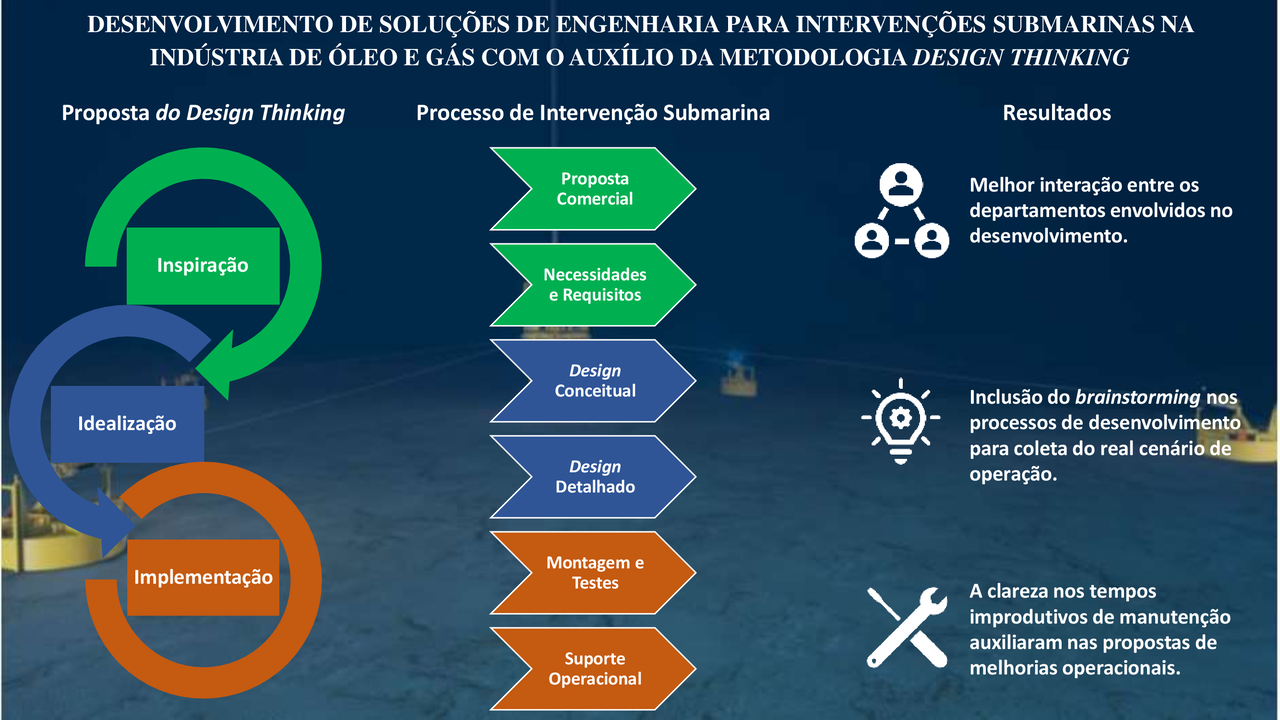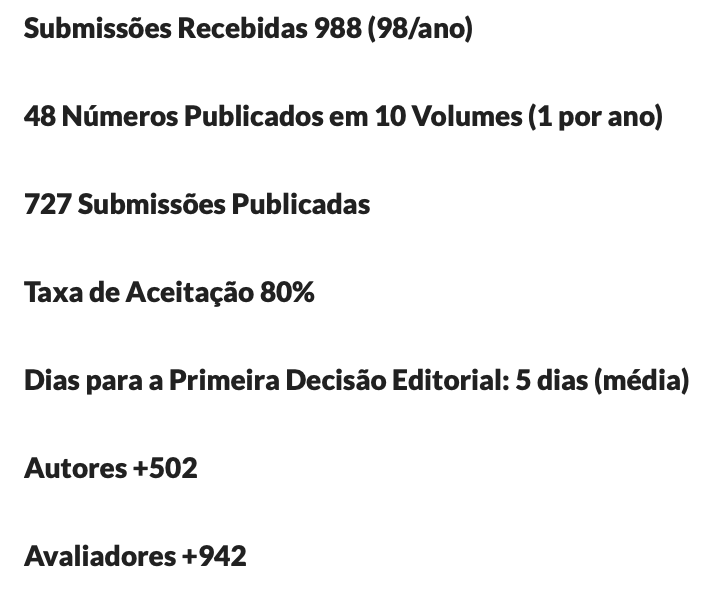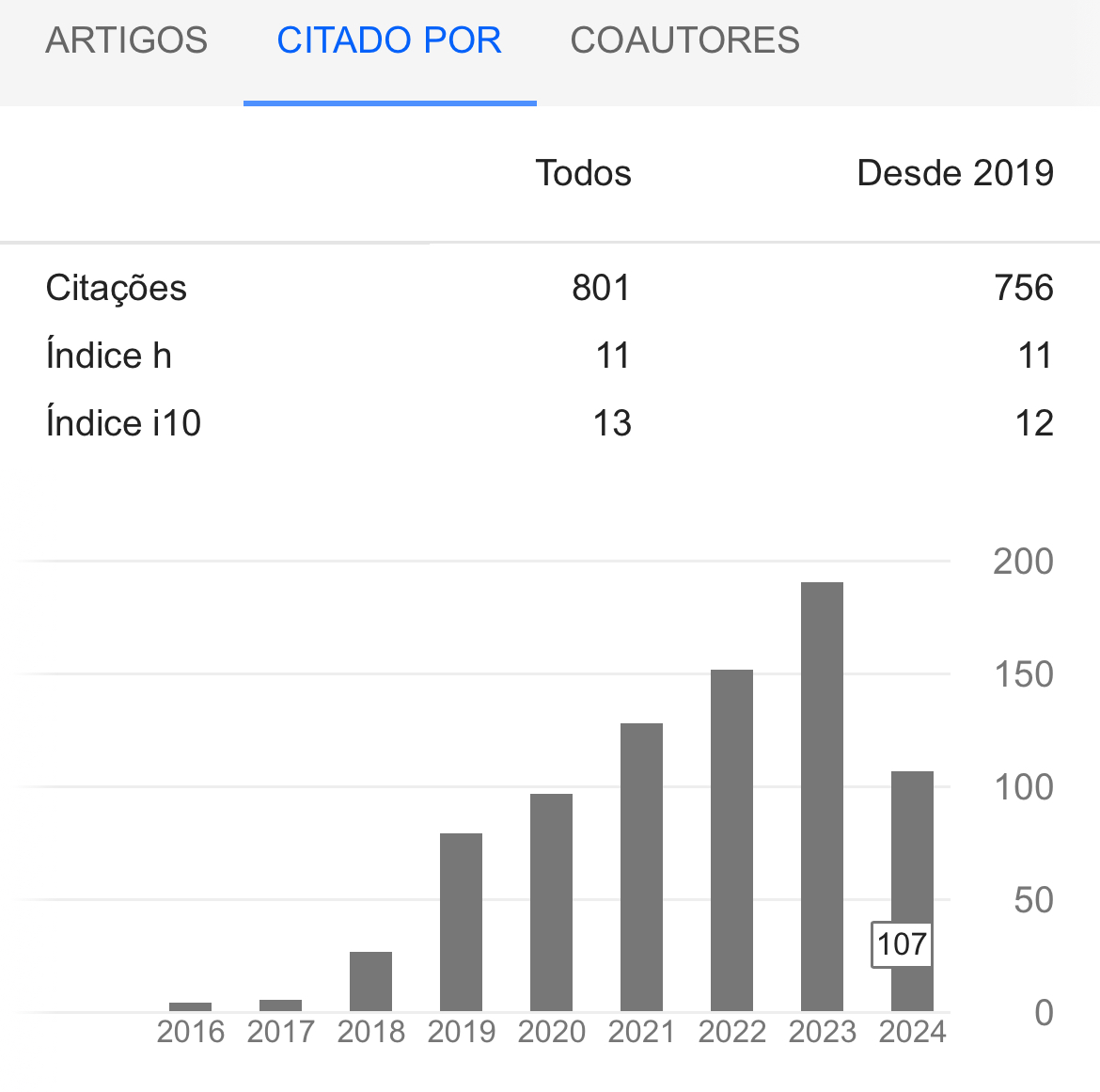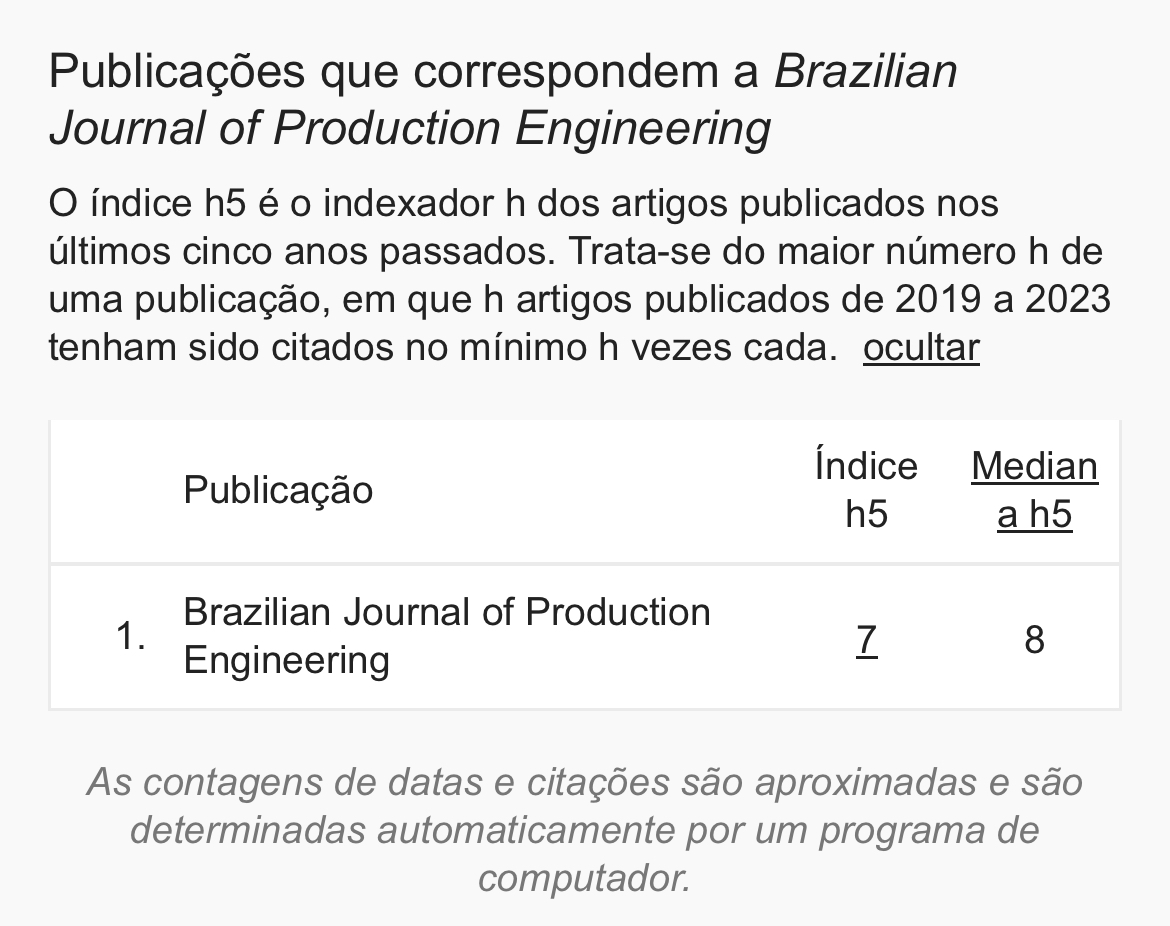Desarrollo de soluciones de ingeniería para intervenciones submarinas en la industria del petróleo y el gas con la ayuda de la metodología design thinking
DOI:
https://doi.org/10.47456/bjpe.v8i4.37229Palabras clave:
Desarrollo de producto, design thinking, industria de petróleo y gas, innovación, intervenciones submarinasResumen
La variación del precio del barril de petróleo en el mercado global aumenta la competitividad de las empresas de la industria del petróleo y gas en las actividades de exploración y producción, siendo fundamental la mejora del servicio al cliente para la supervivencia de los proveedores de servicios. En este contexto, la aplicación de la metodologia design thinking tiene un papel fundamental en el desarrollo de soluciones para intervenciones submarinas en esta industria, ya que el cumplimiento del prazo de entrega y las necessidades del cliente son fundamentales para que no se produzca una interrupción en la producción de petróleo. El objetivo de este estudio es analizar cómo el design thinking, asociado a los métodos de desarrollo de productos design for manufacturing (DFM) y design for assembly (DFA), se puede insertar en los procesos de ingeniería de sistemas de una empresa multinacional de petróleo y gas para potenciar los resultados durante la ejecución de los proyectos de desarrollo. El design thinking se inserta en él método de investigación soft design science research para construir una solución que reduzca los impactos en los desafíos encontrados. Los resultados obtenidos, como la interacción entre los departamentos de ingeniería, proyectos, operaciones y compras, ayudan en la gestión de las actividades de desarrollo de productos, con ele objetivo de satisfacer las necesidades operativas, de tiempo y costo del usuario final.
Descargas
Citas
Al Hamed, O. & Nair, G. K. (2016). Systems dynamics for extra-ordinary results. Society of Petroleum Engineers - Abu Dhabi International Petroleum Exhibition and Conference 2016. https://doi.org/10.2118/183365-ms DOI: https://doi.org/10.2118/183365-MS
Baskerville, R., Pries-Heje, J., & Venable, J. (2009). Soft design science methodology. Proceedings of the 4th International Conference on Design Science Research in Information Systems and Technology. https://doi.org/10.1145/1555619.1555631 DOI: https://doi.org/10.1145/1555619.1555631
Boisvenue-Fox, M. & Meyer, K. (2019). Not what you expected: Implementing design thinking as a leadership practice. Advances in Library Administration and Organization, https://doi.org/10.1108/S0732-067120190000040009 DOI: https://doi.org/10.1108/S0732-067120190000040009
Bonini, L. A. & Sbragia, R. (2011). O Modelo de Design Thinking como Indutor da Inovação nas Empresas: Um Estudo Empírico. Revista de Gestão e Projetos, 2(1), 03–25. https://doi.org/10.5585/gep.v2i1.36 DOI: https://doi.org/10.5585/gep.v2i1.36
Brown, T & Wyatt, J. (2010). Design thinking for social innovation. Standford Social Innovation Review, 65–70. https://doi.org/10.2307/j.ctt1t8917t.13 DOI: https://doi.org/10.2307/j.ctt1t8917t.13
Brown, Tim. (2008). Design Thinking. Harvard Business Review. https://doi.org/10.1145/3347709.3347775 DOI: https://doi.org/10.1145/3347709.3347775
Brown, Tim. (2009). Change by desing: How design thinking transform organizations and inspires innovation. Nova York, NY: HarperCollins e-books.
Caluri, L., Jianu, M., Cerioli, P., & Silvestri, G. B. (2019). Open innovation as enabling paradigm to empower digital transformation in oil & gas organizations. Society of Petroleum Engineers - Abu Dhabi International Petroleum Exhibition and Conference 2019, ADIP 2019. https://doi.org/10.2118/197904-ms DOI: https://doi.org/10.2118/197904-MS
Camacho, M. (2016). David Kelley: From Design to Design Thinking at Stanford and IDEO. She Ji ,The Journal of Design, Economics, and Innovation, 2(1), 88–101. https://doi.org/10.1016/j.sheji.2016.01.009 DOI: https://doi.org/10.1016/j.sheji.2016.01.009
Cankurtaran, P. & Beverland, M. B. (2020). Using design thinking to respond to crises: B2B lessons from the 2020 COVID-19 pandemic. Industrial Marketing Management, 88(June), 255–260. https://doi.org/10.1016/j.indmarman.2020.05.030 DOI: https://doi.org/10.1016/j.indmarman.2020.05.030
Carr, S. D., Halliday, A., King, A. C., Liedtka, J., & Lockwood, T. (2010). The Influence of Design Thinking in Business: Some Preliminary Observations. Design Management Review, 21(3), 58–63. https://doi.org/10.1111/j.1948-7169.2010.00080.x DOI: https://doi.org/10.1111/j.1948-7169.2010.00080.x
Corrales-Estrada, M. (2019). Design thinkers’ profiles and design thinking solutions. Academia Revista Latinoamericana de Administracion, 33(1), 9–24. https://doi.org/10.1108/ARLA-01-2018-0028 DOI: https://doi.org/10.1108/ARLA-01-2018-0028
Doorley, S., Holcomb, S., Klebahn, P., Segovia, K., & Utley, J. (2018). Design Thinking Bootleg. Design Thinking Bootleg. https://dschool.stanford.edu/resources/design-thinking-bootleg
Evensen, O., Womack, D., & Spencer, L. (2020). Essential tactics to foster innovation in oil and gas. Research Insights IBM. https://www.ibm.com/downloads/cas/VOJ540GZ
Geissdoerfer, M., Bocken, N. M. P., & Hultink, E. J. (2016). Design thinking to enhance the sustainable business modelling process – A workshop based on a value mapping process. Journal of Cleaner Production, 135, 1218–1232. https://doi.org/10.1016/j.jclepro.2016.07.020 DOI: https://doi.org/10.1016/j.jclepro.2016.07.020
Gobble, M. M. (2014). Design thinking. Research Technology Management, 59–61. DOI: https://doi.org/10.1080/08956308.2018.1445391
Goldberg, D. E. (2015). The Six Minds of a Whole New Engineer. Journal of Petroleum Technology, 67(03), 22–24. https://doi.org/10.2118/0315-0022-jpt DOI: https://doi.org/10.2118/0315-0022-JPT
Holubchak, K. (2020). The application of design thinking methodology in architectural education in Ukraine: Case Study. 19–29. https://doi.org/10.21307/ACEE-2020-027 DOI: https://doi.org/10.21307/acee-2020-027
IDEO. (2015). Design Thinking for Better Libraries. Information Outlook, 15, 10–11. https://designthinking.ideo.com/resources/design-thinking-for-libraries
International Standard ISO / IEC / IEEE 15288:2015 - Systems and software engineering -System life cycle process. https://standards.ieee.org/ieee/15289/5789/
Johansson-Skoldberg, U., Woodilla, J., & Çetinkaya, M. (2013). Design Thinking: Past, Present and Possible Futures. John Wiley & Sons Ltd, 22(2), 176–190. https://doi.org/10.4324/9781315748825-13 DOI: https://doi.org/10.1111/caim.12023
Kelley, D. & Kelley, T. (2013). Creative confidence - Unleashing the creative potential within us all. Nova York, NY: Crown Business.
Kelley, T. & Littman, J. (2005). The ten faces of innovation. Nova York, NY: Doubleday.
Kelly, T. & Littman, J. (2001). The art of innovation, lessons in creativity from IDEO. Nova York, NY: Broadway Business.
Kitchenham, B. & Charters, S. (2007). Guidelines for performing systematic literature reviews in Software Engineering. Technical Report No. EBSE -2007-01. https://doi.org/10.1145/1134285.1134500 DOI: https://doi.org/10.1145/1134285.1134500
Kritsadativud, P., Sivapiromrat, P., Limprasert, T., Srihirunrusmee, S., Whangkitjamorn, J., Navasumrit, P., Roatkanjanaporn, T., Sapmanee, K., Palviriyachote, S., Thongpian, D., Kaewmuang, W., Promsen, P., Kittisupalauk, S., Kittisureethorn, N., Tan, S., & Swarnanto, L. D. (2017). Prolonging gas production until the end of concession by optimizing existing resources: A case study from greater bongkot south field development strategy. Society of Petroleum Engineers - SPE Abu Dhabi International Petroleum Exhibition and Conference 2017. https://doi.org/10.2118/188178-ms DOI: https://doi.org/10.2118/188178-MS
Kumar, V. (2013). Vijay Kumar, 101 Design Methods: A Structured Approach for Driving Innovation in Your Organization. Hoboken, NJ: John Wiley & Sons Inc.
Kummitha, R. K. R. (2018). Institutionalising design thinking in social entrepreneurship: A contextual analysis into social and organizational processes. Social Enterprise Journal, 14(1), 92–107. https://doi.org/10.1108/SEJ-12-2016-0059 DOI: https://doi.org/10.1108/SEJ-12-2016-0059
Leavy, B. (2011). Roger Martin explores three big ideas: Customer capitalism, integrative thinking and design thinking. Strategy and Leadership, 39(4), 19–26. https://doi.org/10.1108/10878571111147369 DOI: https://doi.org/10.1108/10878571111147369
Liedtka, J. (2014). Innovative ways companies are using design thinking. Strategy and Leadership, 42(2), 40–45. https://doi.org/10.1108/SL-01-2014-0004 DOI: https://doi.org/10.1108/SL-01-2014-0004
Liedtka, J., King, A., & Bennett, K. (2013). Solving problems with design thinking: 10 stories of what works. Nova York, NY: Columbia Business School
Liedtka, J. & Ogilvie, T. (2011). Designing for Growth. Nova York, NY: Columbia University Press.
Lógó, E., Orbulov, V. "Case study for product development innovation based on design thinking approach, demonstrated by smart furniture project", Periodica Polytechnica Civil Engineering, v. 65, n. 2, p. 397–408, 2021. https://doi.org/10.3311/PPci.17321 DOI: https://doi.org/10.3311/PPci.17321
Martin, R. (2007). How Successful Leaders. Harvard Business Review. https://hbr.org/2007/06/how-successful-leaders-think DOI: https://doi.org/10.1108/sd.2007.05623jad.007
Martin, R. (2009). The design of business: Why design thinking is the next competitive advantage. Cambridge, MA: Harvard Business Press.
Martin, R. & Euchner, J. (2012). Design thinking. Research Technology Management, 55(3), 10–14. https://doi.org/10.5437/08956308X5503003 DOI: https://doi.org/10.5437/08956308X5503003
Mikkelsen, J. B., & Lange, I. S. G. (2017). Place in transition: Exploring the potentials of relocating disused oil rigs and transforming them into public places. Journal of Landscape Architecture, 12(2), 74–84. https://doi.org/10.1080/18626033.2017.1361095 DOI: https://doi.org/10.1080/18626033.2017.1361095
Nahkle, C. (2018). New technological frontiers in the oil and gas industry. Newsweek, 1–37. https://d.newsweek.com/en/file/459598/newsweek-vantage-oil-gas.pdf
Neal, P. R., Ho, M., Fimbres-Weihs, G., Hussain, F., & Cinar, Y. (2010). Demonstrating CO2 sequestration as part of a first year engineering course. Proceedings - SPE Annual Technical Conference and Exhibition, 2, 1220–1233. https://doi.org/10.2118/133740-ms DOI: https://doi.org/10.2118/133740-MS
Riel, J., & Martin, R. (2017). An integrative methodology for creatively exploring decision choices. Strategy and Leadership, 45(5), 3–9. https://doi.org/10.1108/SL-07-2017-0063 DOI: https://doi.org/10.1108/SL-07-2017-0063
Simon, H. A. (1996). The Sciences of the Artificial. Cambridge, MA.: The MIT Press.
Susman, G. I. & Evered, R. D. (1978). An Assessment of the Scientific Merits of Action Research. Administrative Science Quarterly, 23(4), 582. https://doi.org/10.2307/2392581 DOI: https://doi.org/10.2307/2392581
Tomkoria, A. (2016). Design thinking helps realize the full potential of the digital revolution. Offshore, 76(8). https://www.offshore-mag.com/business-briefs/company-news/article/16755007/design-thinking-helps-realize-the-full-potential-of-the-digital-revolution
Ulrich, K. T., Eppinger, S. D., & Yang, M. (7ª ed.) (2020). Product design and development. Nova York, NY: McGraw-Hill Education.
Walden, D. D., Roedler, G. J., Forsberg, K. J., et al. (2015). Systems Engineering Handbook - A Guide for System Life Cycle Processes and Activities. (4ª ed.). Hoboken, New Jersey: John Wiley & Sons.
Xu, J., Ye, M., Lu, W., Bao, Z., & Webster, C. (2021). A four-quadrant conceptual framework for analyzing extended producer responsibility in offshore prefabrication construction. Journal of Cleaner Production, 282, 124540. https://doi.org/10.1016/j.jclepro.2020.124540 DOI: https://doi.org/10.1016/j.jclepro.2020.124540

Descargas
Publicado
Cómo citar
Número
Sección
Licencia
Derechos de autor 2022 Brazilian Journal of Production Engineering

Esta obra está bajo una licencia internacional Creative Commons Atribución-NoComercial-CompartirIgual 4.0.











































































